Mark A Mathews
age ~68
from Canton, GA
- Also known as:
-
- Mark Ashley Mathews
- Mark L Mathews
- Mark A Matthews
- Ma A Mathews
- Mark Amatthews
- Marka Matthews
Mark Mathews Phones & Addresses
- Canton, GA
- 1851 San Anselmo St, Fairfield, CA 94533
- Saratoga, CA
- Foster City, CA
- San Jose, CA
- Santa Clara, CA
- Carson City, NV
- Modesto, CA
- Cupertino, CA
- 18296 Clemson Ave, Saratoga, CA 95070
Work
-
Company:Internet assistants, llc
-
Address:390 La Herran Drive, Santa Clara, CA 95051
-
Phones:4082434787
-
Position:Owner
-
Industries:Floor Covering Stores
Lawyers & Attorneys

Mark Mathews - Lawyer
view sourceOffice:
Mark A. Mathews PLLC
ISLN:
905100126
Admitted:
1985
University:
Oklahoma Baptist University, B.A., 1982
Law School:
Oklahoma City University, J.D., 1985
Name / Title
Company / Classification
Phones & Addresses
Mathew's Carpet Company
Matthews Carpet. The Matthews Carpet Company
Carpet & Rug Dealers - New. Carpet Layers
Matthews Carpet. The Matthews Carpet Company
Carpet & Rug Dealers - New. Carpet Layers
1765 Roswell Rd, Marietta, GA 30062
7705650571
7705650571
General Manager
The Futon Shop (Headquarters)
A Diamond Production Incorporated
Futon Sales. Mattresses. Furniture - Retail
A Diamond Production Incorporated
Futon Sales. Mattresses. Furniture - Retail
2150 Cesar Chavez, San Francisco, CA 94124
4159206801
4159206801
Owner
Internet Assistants, Llc
Floor Covering Stores
Floor Covering Stores
390 La Herran Drive, Santa Clara, CA 95051
Manager
Futon Shop
Furniture Stores
Furniture Stores
5745 Christie Ave, Oakland, CA 94608
Website: thefutonshop.com
Website: thefutonshop.com
Principle
Internet Assistants, Llc
Motor Vehicle Dealers (New and Used)
Motor Vehicle Dealers (New and Used)
390 La Herran Drive, Santa Clara, CA 95051
Chief Executive
Town And Mountain Realty
Real Estate Agents and Managers
Real Estate Agents and Managers
603 S. Knickerbocker Drive, Sunnyvale, CA 94087
Operational Accounting Manager
Premiere Global Services, Inc.
Telephone Communications, Except Radiotelephone
Telephone Communications, Except Radiotelephone
3280 Peachtree Rd Ne # 1000, Atlanta, GA 30305
Owner
Mathews Carpet CO Inc/Abbey
Floor Covering Stores
Floor Covering Stores
1765 Roswell Rd, Marietta, GA 30062
Website: mathewscarpet.com
Website: mathewscarpet.com
Us Patents
-
Aircraft Trash Collection And Compacting Apparatus
view source -
US Patent:54656605, Nov 14, 1995
-
Filed:Feb 16, 1994
-
Appl. No.:8/198072
-
Inventors:Walter Conti - Woodside CA
William R. Feemster - Malibu CA
Jeffrey L. Felts - Poppy Meadow CA
Antony J. Fields - San Francisco CA
Robert W. Henderson - Claremont CA
Paul L. Howard - Palo Alto CA
Kevin F. Kaub - Palmdale CA
Joel A. Lederman - Canoga Park CA
Thomas M. Lee - Sherman Oaks CA
Gilbert Martinez - Castaic CA
Mark H. Mathews - Northridge CA
Ravi V. Patel - Newhall CA
Michael W. Waldrep - Santa Clarita CA
John H. Wetzel - Glendora CA -
Assignee:Aero-Design Technology - Valencia CA
-
International Classification:B30B 1506
-
US Classification:100 48
-
Abstract:A trash collection and compacting apparatus primarily intended for use onboard an aircraft comprising a stationary compactor unit and interrelated movable wheeled trolley unit, the trolley unit having a plurality of separate trash collection chambers into which trash is deposited and compacted and support rails for supporting the trolley unit on the compactor unit for the direct compaction of trash in the trolley. The trolley unit also has separable sides to facilitate removal of compacted trash, and multiple fail safe locks and latches to ensure that the sides are not inadvertently separated during trash collection and compaction. Fire doors are provided to close the chambers, and removable trash bins are disposed in each trash chamber to facilitate handling of compacted trash, the bins having separable sides for emptying the compacted trash therefrom. The compactor unit includes a compaction ram mounted on a carriage assembly for movement into discrete positions overlying each collection chamber of the trolley unit and supports the trolley so that compaction forces are not transmitted to the aircraft.
-
Aircraft Trash Collection And Compacting Apparatus
view source -
US Patent:54904552, Feb 13, 1996
-
Filed:May 17, 1995
-
Appl. No.:8/442677
-
Inventors:Walter Conti - Woodside CA
William R. Feemster - Malibu CA
Jeffrey L. Felts - Canyon Country CA
Antony J. Fields - San Francisco CA
Robert W. Henderson - Claremont CA
Paul L. Howard - Palo Alto CA
Kevin F. Kaub - Palmdale CA
Joel A. Lederman - Canoga Park CA
Thomas M. Lee - Sherman Oaks CA
Gilbert Martinez - Castaic CA
Mark H. Mathews - Northridge CA
Ravi V. Patel - Newhall CA
Michael W. Waldrep - Santa Clarita CA
John H. Wetzel - Glendora CA -
Assignee:Aero-Design Technology - Valencia CA
-
International Classification:B03B 1516
-
US Classification:100 50
-
Abstract:A trash collection and compacting apparatus primarily intended for use onboard an aircraft comprising a stationary compactor unit and interrelated movable trolley unit, the trolley unit having a plurality of separate trash collection chambers into which trash is deposited and compacted. The trolley unit includes wheels for moving the trolley through an aircraft for the collection of trash, and support rails for supporting the trolley unit on the compactor unit for the direct compaction of trash in the trolley. The compactor unit includes a compaction ram mounted on a carriage assembly for movement into discrete positions overlying each collection chamber of the trolley unit, and supports the trolley so that compaction forces are not transmitted to the aircraft. The trolley unit includes separable sides and dividing panels which facilitate the removal of compacted trash within the chambers, and has multiple fail safe locks and latches to ensure that the sides and panels are not inadvertently separated during trash collection and compaction. The trolley unit is also provided with fire doors to close the chambers, and removable trash bins are disposed in each trash chamber to facilitate handling of compacted trash, the bins having separable sides for emptying the compacted trash therefrom.
-
Apparatus And Method For Successively Refined Competitive Compression With Redundant Decompression
view source -
US Patent:63046768, Oct 16, 2001
-
Filed:Oct 3, 1997
-
Appl. No.:8/944199
-
Inventors:Mark A. Mathews - San Jose CA
-
International Classification:G06K 936
-
US Classification:382246
-
Abstract:System and method using a competitive process to create an optimized set of variable length bit codes to encode one, two or three dimensional data and a high speed redundant lookup table for decoding the resulting representation in real time. The encoding phase consists of multiple passes through the unencoded data to determine the overall best code set for the given data. The primitives used to encode the data may be any mix of operations that captures the redundancy of the raw data. For graphic applications, specific colors and patterns copied from previously occurring data yield sufficiently high compression ratios, but any likely candidates for high frequency occurrence may be added to the mix. The encoding algorithm will ignore any non-optimal operations and assign them no space in the code set. The decoding phase takes the code set generated by the encoding phase and builds one or more redundant lookup tables, where each code's entry occurs a sufficient number of times to guarantee that a single lookup using the next n bits of the encoded data stream as index will correctly decode the next code in the stream.
Medicine Doctors

Mark Robert Mathews
view sourceSpecialties:
Anesthesiology
Allergy & Immunology
Allergy & Immunology
Education:
University of Arizona (1985)

Mark Alan Mathews
view sourceSpecialties:
Allergy & Immunology
Anesthesiology
Pain Medicine
Pain Medicine
Anesthesiology
Pain Medicine
Pain Medicine
Education:
American University of the Caribbean (1997)
Classmates

Mark Mathews
view sourceSchools:
Glenwood High School Phenix City AL 1986-1990
Community:
Jimmy Jamison, Jane Day, Jimmy Everett

Mark Mathews
view sourceSchools:
Wythe High School Wytheville VA 1981-1985
Community:
Betty Walk, Thomas Stone, James Farmer, Kirk Hendren

Mark Mathews
view sourceSchools:
Linden High School Linden MI 1995-1999

Mark Skees (Mathews)
view sourceSchools:
Des Lacs Burlington High School Des Lacs ND 1981-1985
Community:
Jonelle Livermont

Mark Mathews
view sourceSchools:
Bethany Christian High School Troy MI 1978-1982
Community:
Gary Scharmen, Dawn Mcinyre, Andrew Malyszek, Annette Morrison

Mark Mathews
view sourceSchools:
Westerville North High School Westerville OH 2002-2006
Community:
Kay Garrett, Teresa Bossetti, Toni Baker

Mark Mathews
view sourceSchools:
Centaurus High School Lafayette CO 1974-1978

Mark Mathews
view sourceSchools:
Centennial High School Pueblo CO 1978-1982
Youtube
Myspace

Mark Mathews
view sourceGoogleplus

Mark Mathews
Lived:
Kennesaw, Georgia
Work:
City of Kennesaw - Mayor (2008)
MetroAtlanta Ambulance - Government Relations (2009)
MetroAtlanta Ambulance - Government Relations (2009)
Education:
North Cobb High School, Kennesaw State University
About:
Currently serve as Mayor for the City of Kennesaw.

Mark Mathews
Work:
Ruelala.com - Imaging Specalist
Education:
University of Massachusetts Lowell - Graphic design/ political science
Tagline:
I'm a Legend.
Bragging Rights:
Survived 1Million bruins fans while in costume
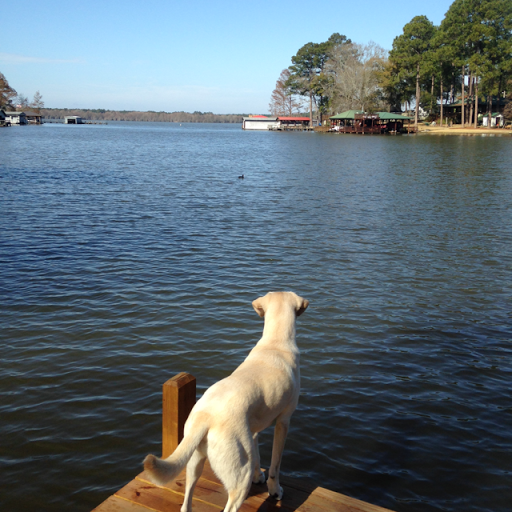
Mark Mathews
Work:
AFB&T - Commercial Banker
Education:
UGA
About:
Hey
Bragging Rights:
Your mom

Mark Mathews
Work:
Delta Air Lines - Pilot
Education:
Metropolitan State College of Denver - Aerospace Sciece
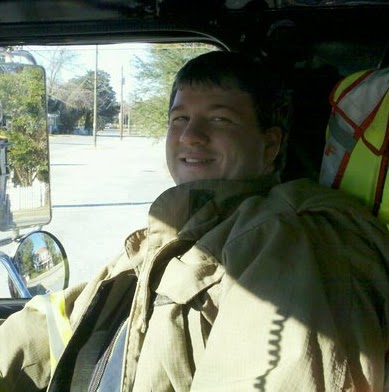
Mark Mathews
Work:
Effingham County Fire Rescue - Firefighter (2010)

Mark Mathews
Education:
Hillsborough high

Mark Mathews

Mark Mathews
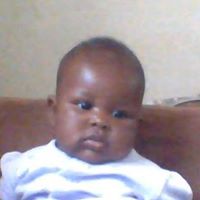
Pilirani Mark Mathews Kan...
view source
Garry Mark Mathews
view source
Mark J Mathews
view source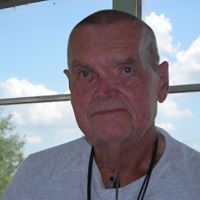
Mark Mathews
view source
Mark Mathews
view source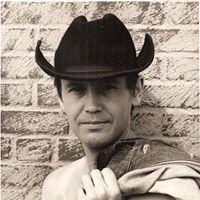
Mark Mathews
view source
Mark Mathews
view source
Mark Mathews
view sourceNews

Retailers face a Thanksgiving Day decision: Open or closed?
view source- "There is definitely a big trend here for more people to be shopping on Thanksgiving Day," said Mark Mathews, vice president of research development at the National Retail Federation. In addition, he said, "We have seen a shift in emphasis on Black Friday to other days on that weekend."
- Date: Nov 27, 2019
- Category: Business
- Source: Google

Eddie Aikau big-wave surf contest is a 'go'
view source- HAW)Clyde Aikau (HAW)Albee Layer (HAW)Kala Alexander (HAW)Garrett McNamara (HAW)Jeremy Flores (FRA)Round 2/Heat 4Bruce Irons (HAW)Makua Rothman (HAW)Ian Walsh (HAW)Nathan Fletcher (USA)Noah Johnson (HAW)Peter Mel (USA)Takayuki Wakita (JPN)Alternates ListMason Ho (HAW)Danilo Couto (BRA)Mark Mathews (
- Date: Feb 25, 2016
- Category: U.S.
- Source: Google

Cordray issues a warning to money giants
view source- OU Police Chief Andrew Powers said Mark Mathews was put on paid leave on Dec. 8 and will remainon leave until an internal investigation is completed.Powers wouldn't specific what thedepartment is investigating, but said he is personally handling the investigation.
- Date: Jan 06, 2012
- Category: U.S.
- Source: Google
Plaxo

Mark Mathews
view sourceSterrett, ALClassroom Teacher (5th Grade) at Talladega County...

Mark Mathews
view sourceAtlanta, GA
Get Report for Mark A Mathews from Canton, GA, age ~68







